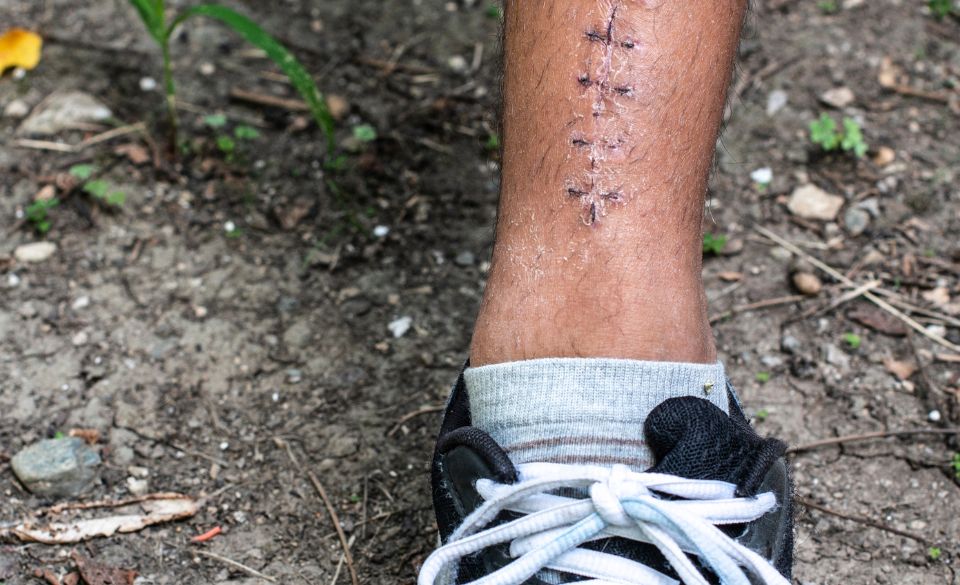
Can You Exercise With Stitches? A Complete Guide
Page Contents
When you get a cut or injury that requires stitches, it’s natural to wonder how it will affect your exercise routine. Exercise is important for overall health, but it’s also important to give your body time to heal after an injury. In this article, we’ll explore whether it’s safe to exercise with stitches, what types of exercise to avoid, and how to exercise safely during the healing process.
The Healing Process for Stitches
The process of wound healing involves several stages, including inflammation, new tissue formation, and remodeling. During the early stages of healing, it’s important to avoid activities that can interfere with the healing process or cause further injury. The risks of exercising with stitches include reopening the wound, delaying healing, and increasing the risk of infection. Your doctor or healthcare provider will provide specific guidance on when it’s safe to resume exercise after getting stitches, but in general, it’s recommended to avoid exercise for at least 24 to 48 hours after the procedure.
Types of Exercise to Avoid with Stitches
When recovering from a wound that requires stitches, there are certain types of exercises that should be avoided to prevent further injury or damage to the affected area. Here are some types of exercises to avoid with stitches:
High-impact activities: Activities that involve jumping, running, or other high-impact movements should be avoided until the wound is fully healed. These activities can put stress on the affected area and increase the risk of reopening the wound.
Twisting or stretching exercises: Exercises that involve twisting or stretching the affected area should also be avoided. These movements can put strain on the stitches and cause them to loosen or break.
Heavy lifting: Any type of heavy lifting or resistance training that involves the affected area should be avoided until the wound is fully healed. This can prevent additional stress or strain on the stitches.
Contact sports: Contact sports such as basketball, football, or martial arts should be avoided until the wound is fully healed. These sports involve physical contact and can increase the risk of reopening the wound.
Swimming or soaking in water: Avoid swimming or soaking in water until the wound is fully healed. This can increase the risk of infection and delay the healing process.
Yoga or Pilates: Avoid any yoga or Pilates exercises that involve twisting or stretching the affected area. Instead, focus on gentle stretching or non-impact exercises.
By avoiding these types of exercises and following your doctor’s advice, you can help ensure a safe and successful healing process. Remember to prioritize your health and listen to your body to avoid further injury or complications.
Types of Exercise That are Safe with Stitches
While there are certain types of exercises to avoid with stitches, there are also many safe and effective exercises that you can do to maintain your overall fitness and support a healthy healing process. Here are some types of exercise that are generally considered safe with stitches:
Walking: Walking is a low-impact exercise that can help improve cardiovascular health and promote healing without putting too much stress on the affected area. Start with short walks and gradually increase the duration and intensity over time.
Stationary biking: Cycling on a stationary bike is another low-impact exercise that can help improve cardiovascular health and promote healing. Be sure to adjust the seat and handlebars to avoid putting pressure on the affected area.
Upper body exercises: Exercises that focus on the upper body, such as arm curls, shoulder presses, and chest flies, can be safe and effective with stitches as long as they don’t involve the affected area. Use light weights and focus on proper form to avoid straining other parts of the body.
Non-impact exercises: Other non-impact exercises such as seated yoga, resistance band training, or gentle stretching can help improve flexibility, strength, and overall well-being without putting stress on the affected area.
Low-impact aerobics: Some low-impact aerobics classes, such as low-impact Zumba or water aerobics, may be safe with stitches. Be sure to check with your doctor or instructor before participating in any group fitness classes.
By incorporating these safe exercises into your routine and gradually increasing intensity and duration over time, you can support a healthy healing process and maintain your overall fitness. Remember to prioritize safety, listen to your body, and consult with your doctor if you have any concerns.
How to Exercise Safely with Stitches
When it comes to exercising with stitches, it’s important to prioritize safety and take precautions to avoid further injury or complications. Here are some tips for exercising safely with stitches:
Get clearance from your doctor: Before resuming exercise, it’s important to consult with your doctor or healthcare provider to ensure that it’s safe to do so. They may recommend modifying your exercise routine or avoiding exercise altogether until the wound is fully healed.
Start slowly: If you’ve been cleared to exercise, start slowly and gradually increase the intensity of your workout over time. Avoid high-impact activities or any movements that put stress on the affected area.
Keep the area clean and dry: Be sure to keep the area around the stitches clean and dry before, during, and after exercise. This can help prevent infection and ensure a smooth healing process.
Use support or compression: If necessary, use supportive gear such as a compression bandage or wrap to help stabilize the affected area during exercise. This can help reduce the risk of reopening the wound or causing further injury.
Avoid twisting or stretching the affected area: Exercises that involve twisting or stretching the affected area should be avoided until the wound is fully healed. Instead, focus on exercises that don’t involve movement near the affected area, such as cycling or using an elliptical machine.
Listen to your body: Pay attention to any pain, discomfort, or unusual sensations during exercise. If you experience any of these warning signs, stop exercising immediately and consult with your doctor.
Hydrate and rest: It’s important to stay hydrated and rest as needed during exercise. This can help ensure a safe and successful healing process.
By taking these precautions and following your doctor’s advice, you can safely exercise with stitches and maintain your overall health and fitness. Remember to prioritize safety and listen to your body to avoid further injury or complications.
Final Words
While exercise is an important part of a healthy lifestyle, it’s important to prioritize rest and recovery when you have stitches. Following your doctor’s instructions and taking precautions during exercise can help ensure a safe and successful healing process. Remember to give your body the time and care it needs to fully heal before resuming your regular exercise routine.



